Is it safe to live on a former landfill site?
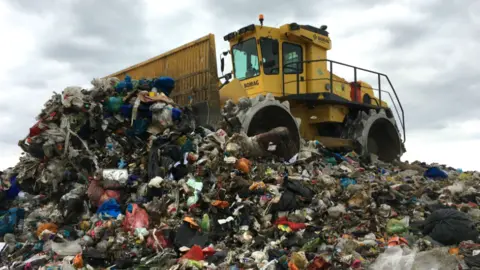 BBC
BBCWith the need for more housing, developers are moving in to build on top of former landfill sites. But how safe are these places, and should people be concerned about living on top of them?
The UK dumps nearly 50 million tonnes of industrial, commercial and domestic waste into landfill sites every year - enough rubbish to fill Wembley Stadium to the brim more than 50 times over.
The process is tightly regulated. Meticulous records are kept of what we dump and where we dump it.
But landfill hasn't always been this well managed - and Britain's appetite in years gone by for filling huge holes in the ground with waste is beginning to haunt us.
There are 20,000 former landfill sites across the UK - 1,200 of them are on England's coastline. File on 4 has had exclusive access to an unpublished report commissioned by the Environment Agency, looking at these sites and the impact of flooding and coastal erosion.
Prof Kate Spencer from Queen Mary University of London led the investigation and has now raised serious concerns about the impact not only on the environment - but on public health.
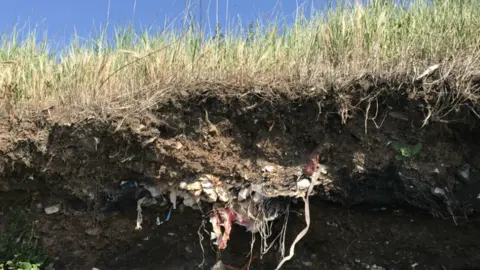
One example can be found on Clinker Beach in East Tilbury, along the foreshore of the River Thames in Essex, where a layer of old clothes and plastics hangs out of a muddy bank. The spot has become a popular spot for treasure hunters.
"You see people rummaging through it, picking up bits of material and taking them home. Certainly I wouldn't touch any of this without gloves," says Kate.
"Here on the floor you can see these little black cylinders - they're the cells from inside old batteries and we know that batteries used to contain lead and mercury. We've analysed the waste and it contains pretty much all the nasty chemicals that you can think of at concentrations that would be predicted to cause significant ecological harm."
She says it would cost billions of pounds to clean up all the sites so it is important to identify which pose the biggest threat.
"We need to come up with some suitable management scenarios. The ultimate responsibility either lies with the local authority or with the Environment Agency but I don't think they have the resources to deal with it."
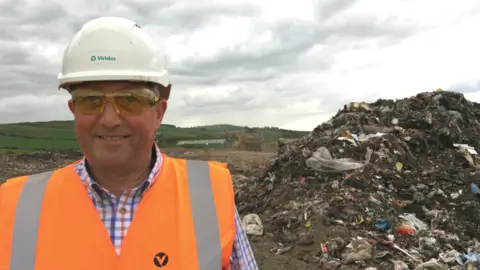
In 1990, the Environmental Protection Act set out a regime for regulating and licensing the disposal of controlled waste.
One site in Dunbar, on the east coast of Scotland, handles 5,000 tonnes of waste every week from Edinburgh, which is around 30 miles away.
"Before we put any waste in, we put in a metre of engineered clay," explains site manager Barry Falgate. "Then it's lined with a heavy duty plastic, then gravel on top, which catches the water which comes from the waste as it degrades.
"Then, when we've finished, we put plastic over the top and then we put soils on it. We have the aftercare of this site for at least 60 years, so we want to make sure that that waste is safe and we can control the waters and gases out of it. I was brought up around here so I care what we do."
The Department of Environment, Food and Rural Affairs used to offer grants to local authorities to clean up contaminated land, via the Contaminated Land Capital Projects (CLCP) programme. This funding stream came to an end in March this year.
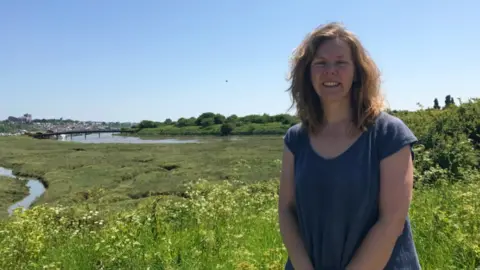
In Amber Valley in Derbyshire battle lines are being drawn, where a developer wants to build 200 homes on a former landfill site.
"My mum stopped growing vegetables because of what was under the ground here," says campaigner Kellie Judson.
"We used to get foul smells on my mum's garden when I was a little girl - a TCP smell and an eggy smell."
Amber Valley Rugby Club now occupies the former landfill site - but they've been offered brand new facilities by the developer if they move.
Underground testing has shown that remedial work could make the area safe, but Kellie and other residents are worried about an adjacent former landfill which contains known hazardous waste.
"We're concerned that contamination from the other site could potentially leach on to this one - that disturbing the ground in this area could pose a threat to people living locally," she says.
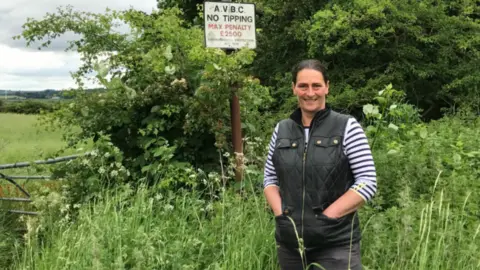
The development has twice been turned down by the planning board of Amber Valley Borough Council and it goes before the planning inspectorate next month.
Whether it goes ahead or not, little will be done to further risk assess the surrounding area unless something new emerges, because government guidelines don't demand it.
The deputy leader of the council, Trevor Ainsworth, supports the development plans.
"There are things in the ground that, on the face of it, would be dangerous to human health. However I know it can be remediated and made safe. It is one of our policies that we regenerate land that has been used as tips - lots of houses now have been built safely on old tips," he says.
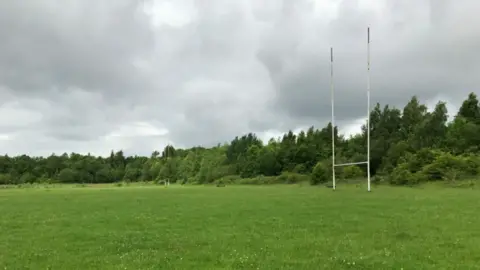
A spokesman for Defra told the BBC: "Our revised Statutory Guidance means more resource can be directed to those sites most in need and allows local authorities to take a more stringent, risk-based approach when identifying and cleaning up contaminated land."
The Local Government Association said: "Councils take this issue very seriously and work closely with the Environment Agency, continuing to monitor sites long after they have closed."

File on 4: What Lies Beneath - The Legacy of Landfill is on BBC Radio 4, 20 June at 20:00 BST - catch up on BBC iPlayer Radio.
Have you got something you want investigating? We want to hear from you. Tweet us or email [email protected]
